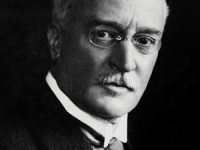Emoticons
On September 19, 1982, Scott Fahlman posted the first documented emoticons 🙂 and 🙁 on the Carnegie Mellon University Bulletin Board System. As SMS and the Internet became widespread in the late 1990s, emoticons became increasingly popular and were commonly used on text messages, internet forums and e-mails. Emoticons have played a significant role in communication through technology.
“I often think there should exist a special typographical sign for a smile — some sort of concave mark, a supine round bracket.”
— Vladimir Nabokov, NYT interview in 1969
Scott Fahlman Background
Fahlman earned his Bachelor’s and Master’s degrees in 1973 from the Massachusetts Institute of Technology (MIT). In 1977 he also earned his doctorate at MIT with Marvin Minsky (A System for Representing and Using Real-World Knowledge).[8] Since 1978 he has been researching at Carnegie Mellon University, where he was appointed professor in 1984. From May 1996 to July 2000, he headed the Pittsburgh Justice System Research Center.
The First Emoticon on the Internet
The original message from which these symbols originated was posted on September 19, 1982. The message was recovered by Jeff Baird on September 10, 2002 and is quoted:
19-Sep-82 11:44 Scott E Fahlman 🙂
From: Scott E Fahlman
I propose that the following character sequence for joke markers:🙂
Read it sideways. Actually, it is probably more economical to mark things that are NOT jokes, given current trends. For this, use🙁
But Emoticons are much older…
From one of our previous blog posts you might remember that the original smiley has been invented by the designer Harvey Ball [4] in 1963 and also there are evidences, that emoticons have been used way back in the year 1881 by Ambrose Bierce.[5] He was then working at the satirical magazine ‘Puck‘ and introduced __/! as a smiling mouth, the exclamation mark had to be appended, if the sentence or phrase written, was meant ironically.
Emoticons printed in 1881 in the U.S. magazine Puck.
Sideways
But then, more than 30 years ago, Scott Fahlman published the famous smiling (or sad) face, laying on the side, which spread widely in a short period of time. Many variations have then been created and with the development of new ways of communication, the emoticons’ importance grew. It seems like a whole new language has established since then, actually two, because the Asian emoticons’ appearance differs remarkably from the so called “western style”.
Importance for the Internet
Emoticons are an important method for participants in Internet communication to make their emotions clear. In contrast to face-to-face communication, Internet communication takes place without any visible counterpart, whose gestures, facial expressions and voice expressions could be interpreted in order to obtain information about the attitude towards the counterpart, statements about the truthfulness and meaning of the statement as well as the emotional state in addition to the word content. The social role of the speaker also provides clues about the meaning of the language content. For example, an ironic statement in written form often cannot be understood solely by the content of the word. Emoticons help to clarify the meaning context of the statements. Unlike other forms of text-based communication, such as letters, strangers often meet on the Internet. This makes it even more difficult to decipher the context of meaning. The emoticons should help to reduce the number of misunderstandings.
An Interview with Scott E. Fahlman, Inventor of the First Emoticon :-), [9]
References and Further Reading:
- [1] Punkt, Punkt, Komma, Strich?: Geste, Gestalt und Bedeutung philosophischer Zeichensetzung
, Christine Abbt, 2009 (In German Language)
- [2] Emoticon History at Time
- [3] What’s the Difference Between Emoji and Emoticons? at Britannica Online
- [4] Harvey Ball and his famous Icon, SciHi Blog
- [5] Nothing really mattered to Ambrose ‘Bitter’ Bierce, SciHi Blog
- [6] Emoticons at Wikidata
- [7] Scott Fahlman at Wikidata
- [8] Marvin Minsky and Artificial Neural Networks, SciHi Blog
- [9] An Interview with Scott E. Fahlman, Inventor of the First Emoticon :-), Heritage Auctions @ youtube
- [10] Scott E. Fahlman at Mathematics Genealogy Project






Pingback: It's World Emoji Day 🎉
Pingback: Conheça a história dos emoticons + lista para copiar e colar
Pingback: Episode 44 – Emoticons – Radio Omniglot